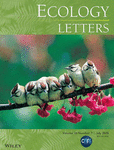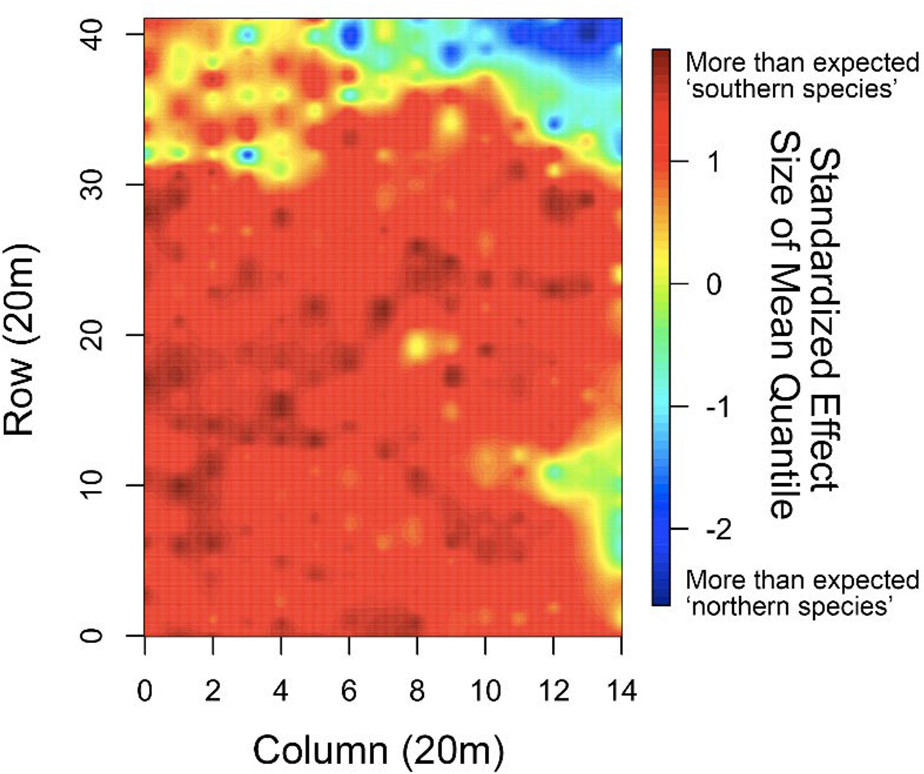Journal list menu
Export Citations
Download PDFs
COVER IMAGE
Cover Image: Volume 26 Number 7, July 2023
- Page: i
- First Published: 30 September 2023
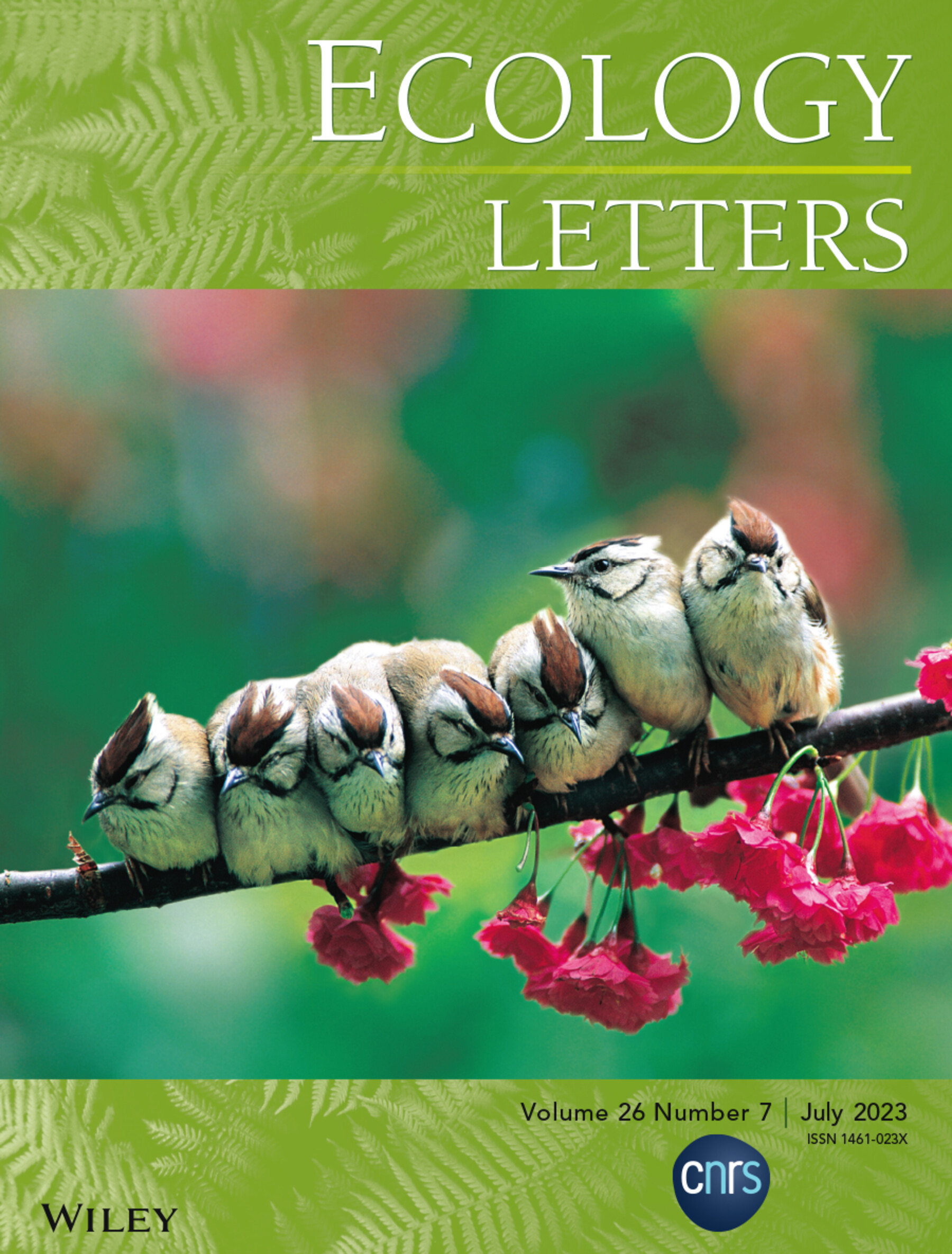
The cover image is based on the Letter Environmental quality mediates the ecological dominance of cooperatively breeding birds by Yu-Heng Lin et al., https://doi.org/10.1111/ele.14226. Image Credit: Ying-Dian Lin.
ISSUE INFORMATION
PERSPECTIVES
Humidity – The overlooked variable in the thermal biology of mosquito-borne disease
- Pages: 1029-1049
- First Published: 10 May 2023
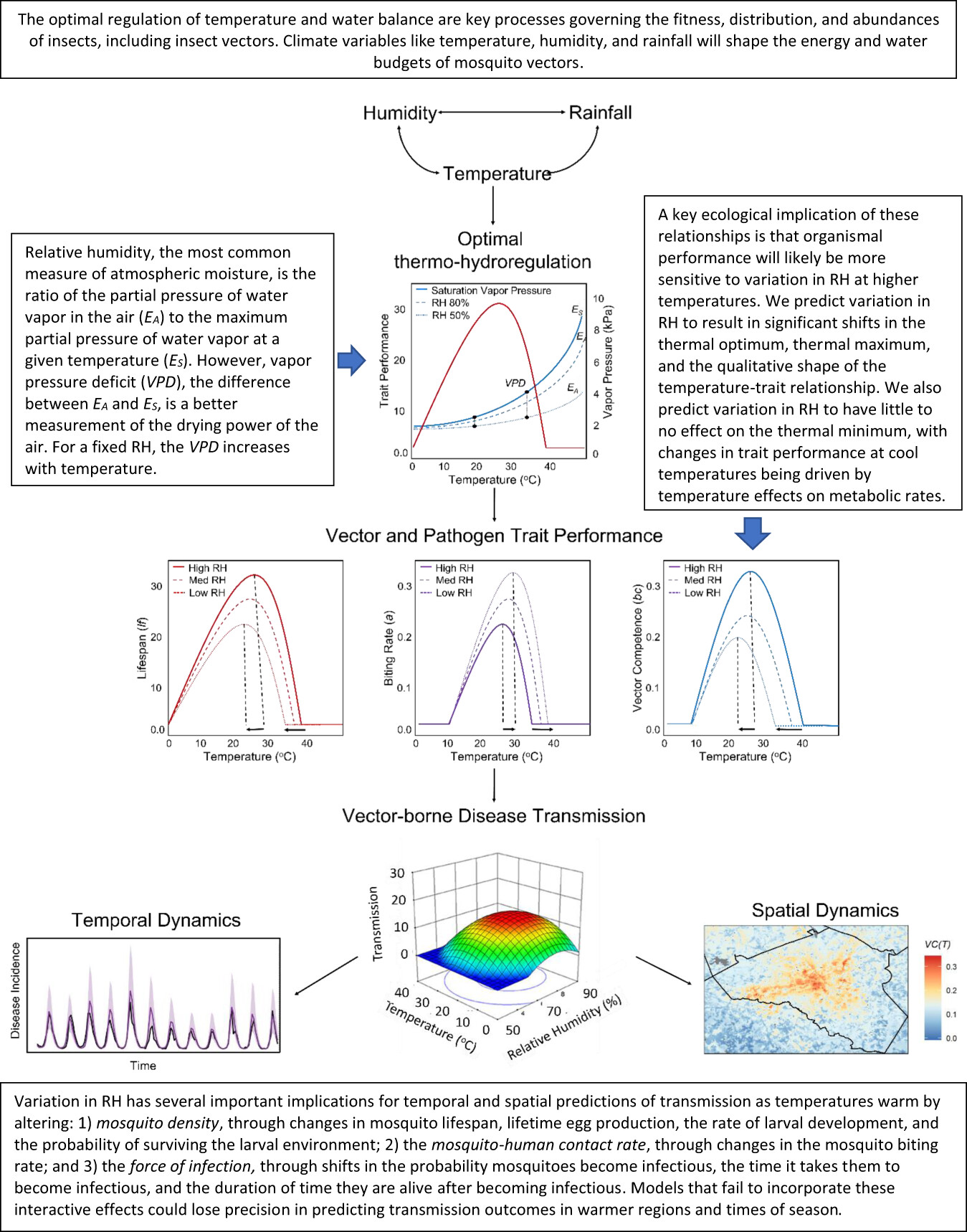
This Perspectives explores how humidity shapes the thermal performance of mosquito-borne pathogen transmission. We summarize what is known about its effects and propose a conceptual model for how temperature and humidity interact to shape the range of temperatures across which mosquitoes persist and achieve high transmission potential. We outline future research areas that will ground the effects of humidity on the thermal biology of pathogen transmission in a theoretical and empirical framework to improve spatial and temporal prediction of vector-borne pathogen transmission.
Integrating sensory ecology and predator-prey theory to understand animal responses to fire
- Pages: 1050-1070
- First Published: 17 May 2023
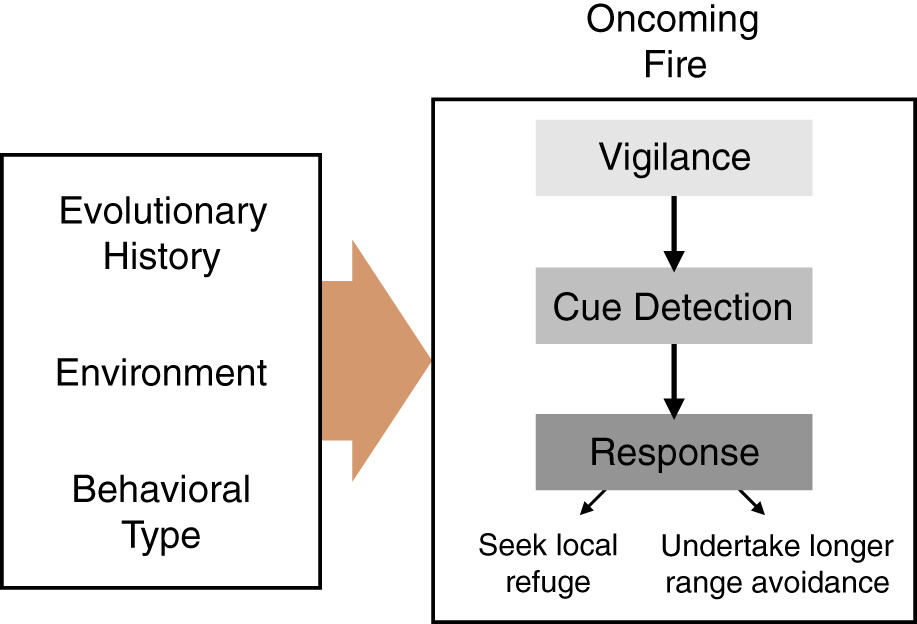
Wildfire regimes are changing globally, yet ecologists lack a conceptual framework for understanding animal behavioural responses to fire. Here, we integrate cue-response sensory ecology and predator-prey theory to predict and explain variation in if, when, and how animals react to approaching fire. Like prey responses to predation risk, this framework considers both fire-naïve and fire-adapted animals and follows three key steps: vigilance, cue detection, and response, and discusses how evolutionary history with fire and other selective pressures such as predation risk should influence animal behaviour during wildfire.
LETTERS
Comparing temporal dynamics of compositional reorganization in long-term studies of birds and fish
- Pages: 1071-1083
- First Published: 14 May 2023
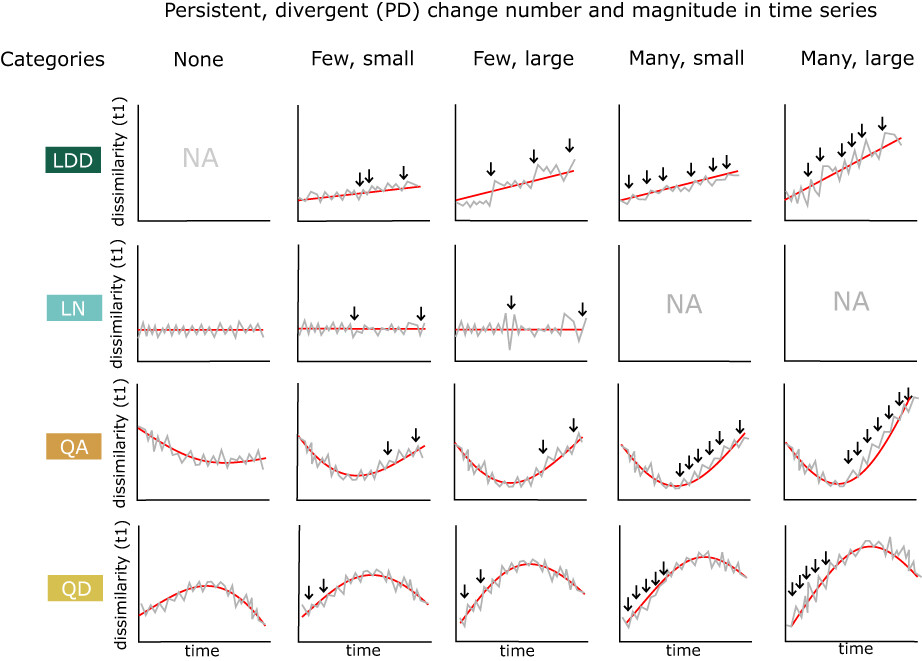
The composition of ecological assemblages has changed rapidly over the past century. We developed a quantitative framework for comparing temporal trajectories of compositional reorganization, and applied it to two long-term bird and marine fish datasets. Compositional reorganization is progressing through a complex mix of temporal trajectories, including both threshold-like behaviour and the accumulation of repeated, linear change.
Complex life cycles drive community assembly through immigration and adaptive diversification
- Pages: 1084-1094
- First Published: 01 May 2023
Eco-evolutionary drivers of avian migratory connectivity
- Pages: 1095-1107
- First Published: 01 May 2023
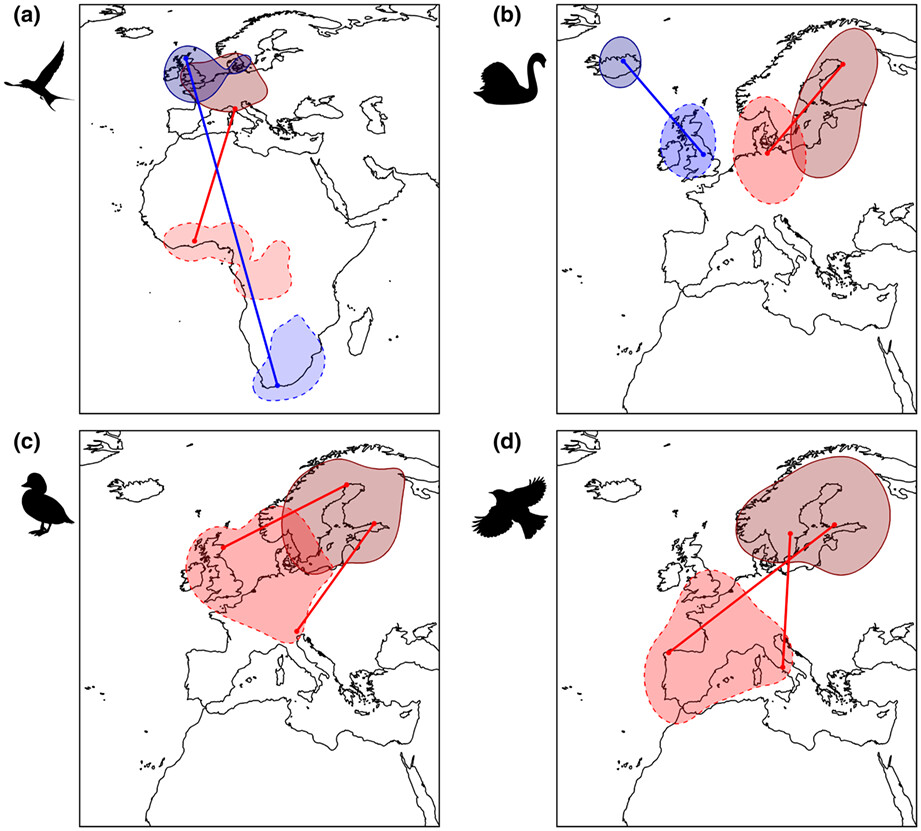
Migratory connectivity, reflecting the extent by which migrants tend to maintain their reciprocal positions in seasonal ranges, can assist in the conservation and management of mobile species. We investigated the eco-evolutionary drivers of avian migratory connectivity showing that geography, reflecting the optimization of migration costs, strongly predicted migratory connectivity. Our study provides a critical tool to inform transboundary conservation and management strategies at the population level.
Fungal genome size and composition reflect ecological strategies along soil fertility gradients
- Pages: 1108-1118
- First Published: 20 April 2023
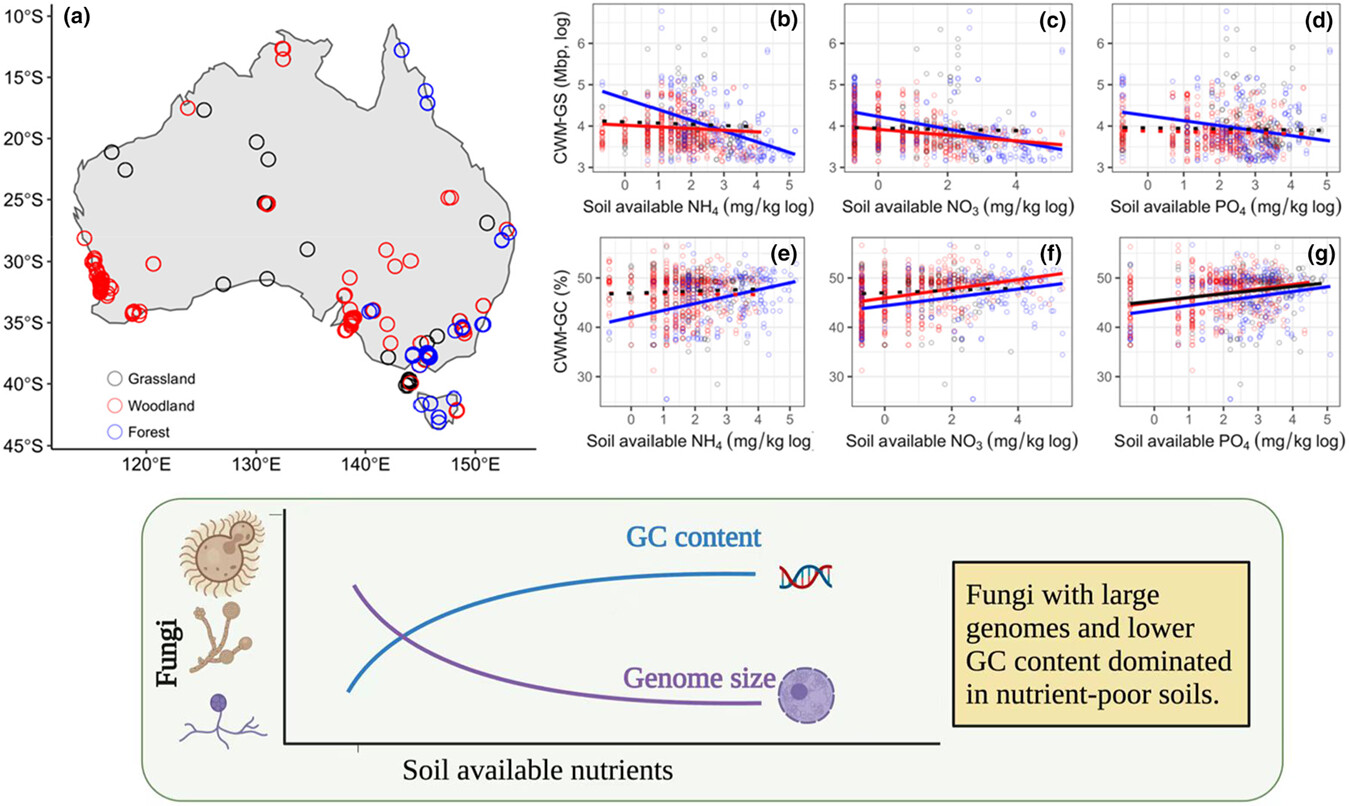
Fungi with large genomes exhibited nutrient-poor biomass and more efficient nucleotide composition. Fungi with large genomes and lower GC content dominated in nutrient-poor soils, associated with shifts in guild composition and with species turnover within guilds. Our results reveal fundamental mechanisms that underpin fungal genome size and nucleotide composition, which helps to understand fungal growth and mycelial construction along soil nutrient gradients.
A spatially explicit trait-based approach uncovers changes in assembly processes under warming
- Pages: 1119-1131
- First Published: 21 April 2023
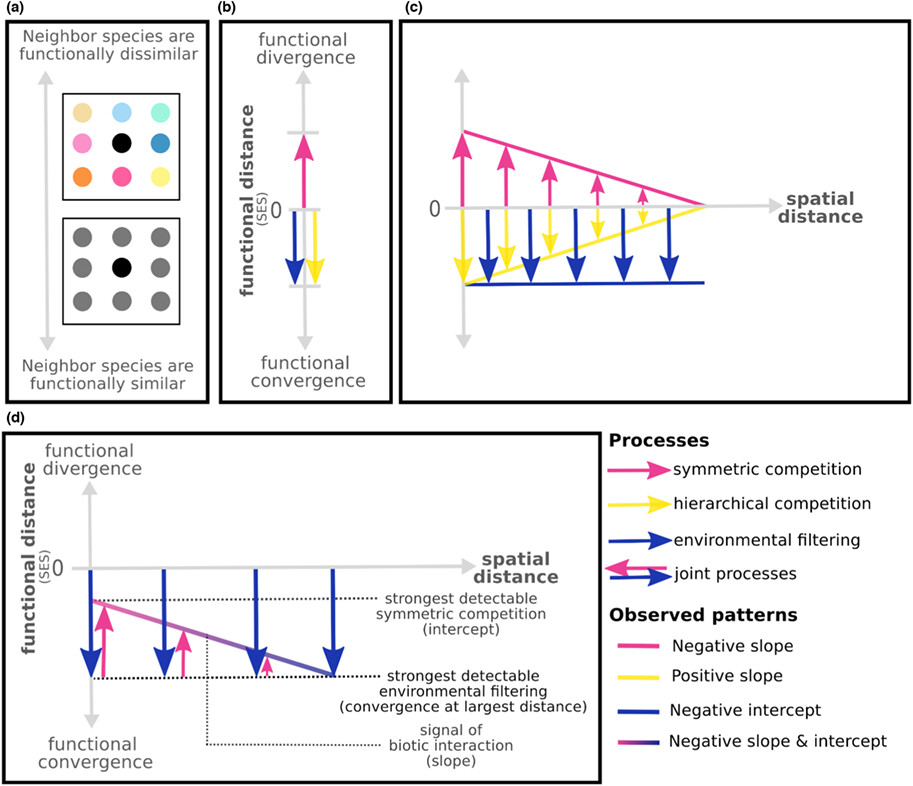
Graphical abstract text
Through our spatially explicit trait-based approach, we paved the way for a novel framework in community ecology that addresses simultaneously many major issues of the original framework of assembly processes. We used the basic but fundamental knowledge that species coexistence depends not only on their functional but also on spatial distance to unravel the processes acting together in plant communities. The unique combination of our framework with a reciprocal community transplant experiment in the French Alps allowed us to test the framework on assembly processes in mountain grasslands and detect community restructuring under climate change.
Disturbance alters transience but nutrients determine equilibria during grassland succession with multiple global change drivers
- Pages: 1132-1144
- First Published: 01 May 2023
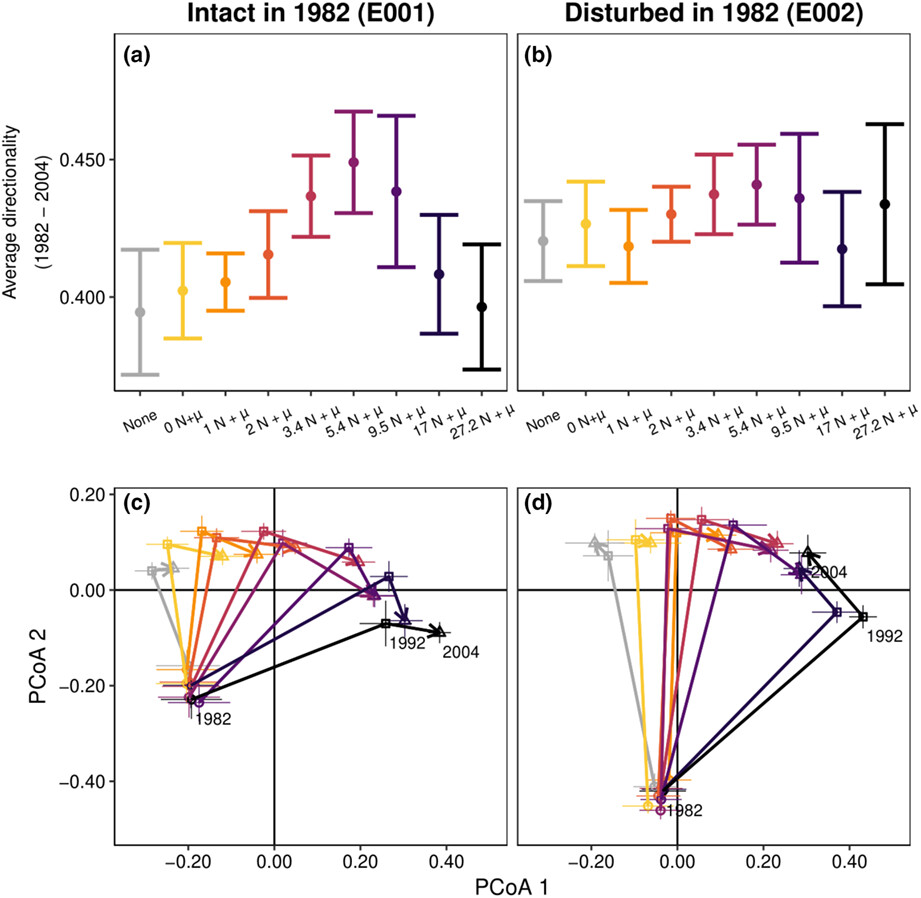
We examined succession in old field grassland communities subjected to disturbance and nitrogen fertilization using data from a long-term (22-year) experiment. Regardless of initial disturbance, after a decade communities converged on steady states largely determined by resource availability, where species turnover declined as communities approached dynamic equilibria.
Environmental quality mediates the ecological dominance of cooperatively breeding birds
- Pages: 1145-1156
- First Published: 01 May 2023
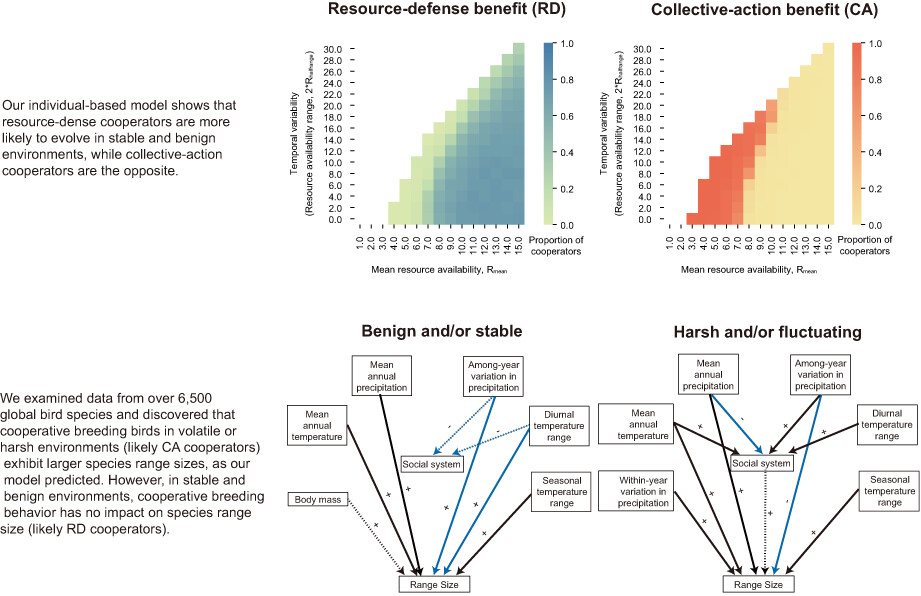
Using a simulation model and comparative phylogenetic analysis of over 6500 bird species, we find that cooperative breeders occurring in harsh/fluctuating environments have larger ranges and greater abundances than non-cooperative breeders, but not those occurring in benign/stable environments. We further show in the simulation that social species living in harsh/fluctuating environments will be less vulnerable to climate change than non-social species.
Ambient and substrate energy influence decomposer diversity differentially across trophic levels
- Pages: 1157-1173
- First Published: 08 May 2023
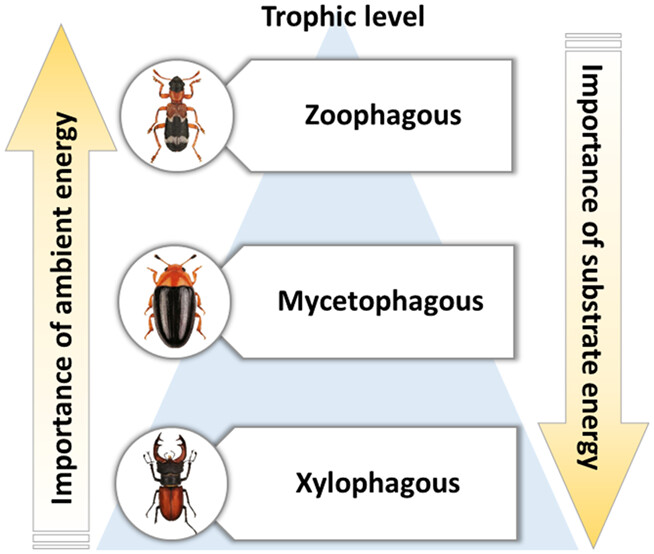
The species-energy hypothesis predicts increasing biodiversity with increasing energy in ecosystems. Proxies for energy availability are often grouped into ambient energy and substrate energy. Using host-phylogeny-controlled models, we show that the relative importance of substrate energy versus ambient energy decreases with increasing trophic levels of decomposer communities: The diversity of zoophagous and mycetophagous beetles was determined by ambient energy, while non-structural carbohydrate content in woody tissues determined that of xylophagous beetles.
Adversarial interspecies relationships facilitate population suppression by gene drive in spatially explicit models
- Pages: 1174-1185
- First Published: 10 May 2023
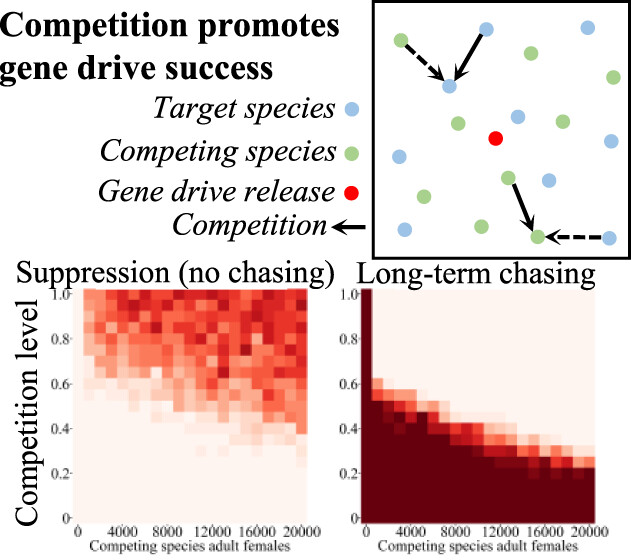
Suppression gene drives bias their inheritance to spread through and eliminate harmful populations, such as mosquitoes of invasive species. However, several models predict that success may be elusive in population with realistic spatial structure or seasonality due to extinction-recolonization cycles. Using such models, we find that competing species or predators can facilitate drive-based suppression, even for less powerful drives.
Recent exposure to environmental stochasticity does not determine the demographic resilience of natural populations
- Pages: 1186-1199
- First Published: 09 May 2023

It is often assumed that exposure to frequent environmental shifts confers a greater ability to cope with current and future global change. However, here, we illustrate how recent-past environmental stochasticity regimes do not predict the inherent resilience of natural populations. Instead, testing the association between the resilience attributes of 2242 natural populations and their exposure to environmental stochasticity, we demonstrate how demographic resilience is strongly predicted by phylogenetic relatedness among species.
Emerging niche clustering results from both competition and predation
- Pages: 1200-1211
- First Published: 08 May 2023
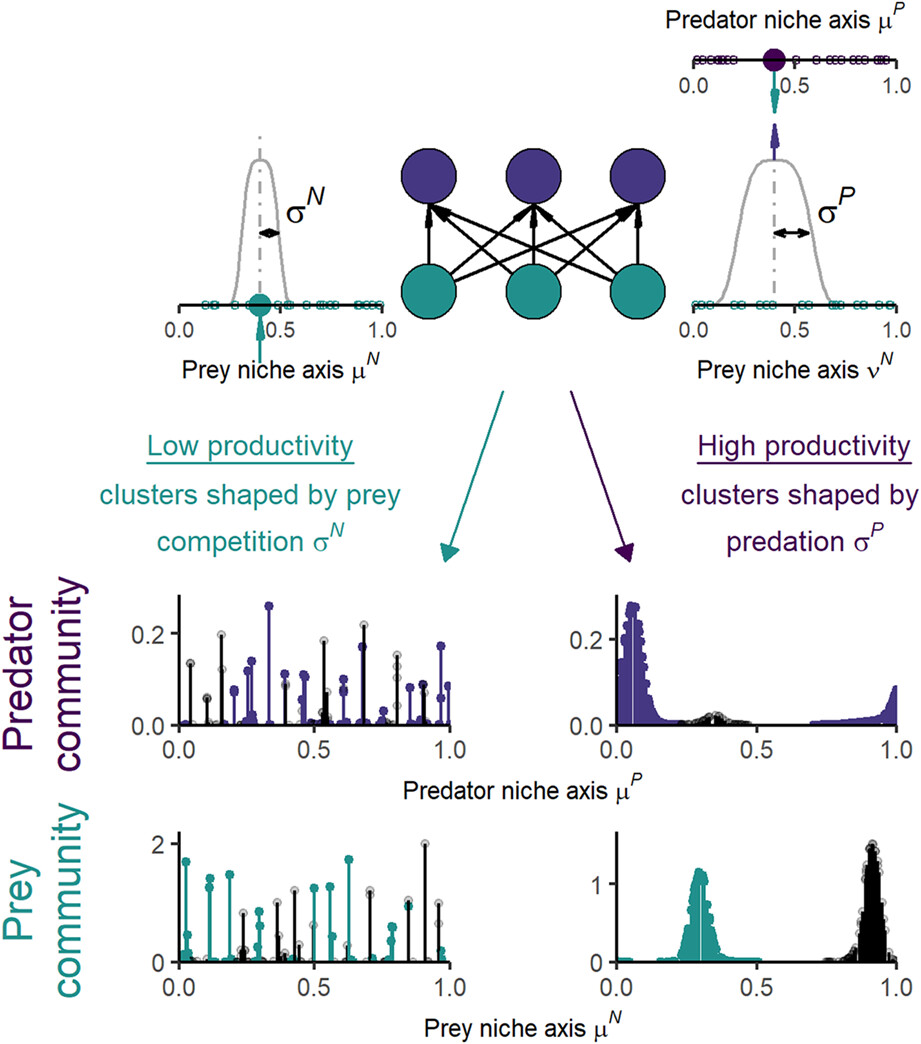
The notion that competing species need to differ in their ecological niche for stable coexistence has dominated ecology for decades. Recent theoretical and empirical work suggests that species can also escape competitive exclusion by being similar, leading to clusters of species with similar traits. Using mathematical and numerical analyses, we reveal that competition and predation are equally capable of promoting clusters of similar species in prey–predator communities, depending on the prey or predator niche width, and their relative importance being modulated by resource availability.
Biogeographic context is related to local scale tree demography, co-occurrence and functional differentiation
- Pages: 1212-1222
- First Published: 10 May 2023
Hummingbird blood traits track oxygen availability across space and time
- Pages: 1223-1236
- First Published: 13 May 2023
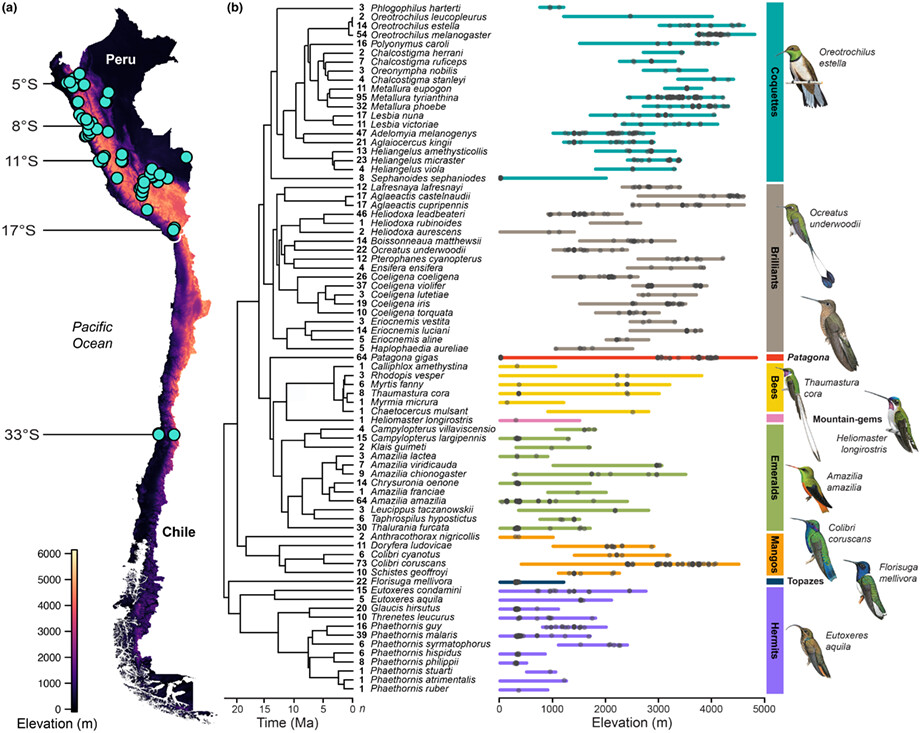
Trait–environment associations can be caused, altered, or broken by adaptive evolution. Comparing such associations at individual versus phylogenetic scales can reveal these processes. We modelled blood traits by environment within and among 77 species of Andean hummingbirds across a 4,600-meter elevational gradient. Unexpectedly, elevational variation in haemoglobin concentration was scale independent, reflecting physical laws of gas exchange in hummingbird respiratory systems. By contrast, species varied by mechanism of haemoglobin adjustment, revealing a signature of genetic adaptation to extreme elevations.
Herbaceous vegetation responses to experimental fire in savannas and forests depend on biome and climate
- Pages: 1237-1246
- First Published: 10 May 2023
SYNTHESIS
Getting the bugs out of AI: Advancing ecological research on arthropods through computer vision
- Pages: 1247-1258
- First Published: 22 May 2023
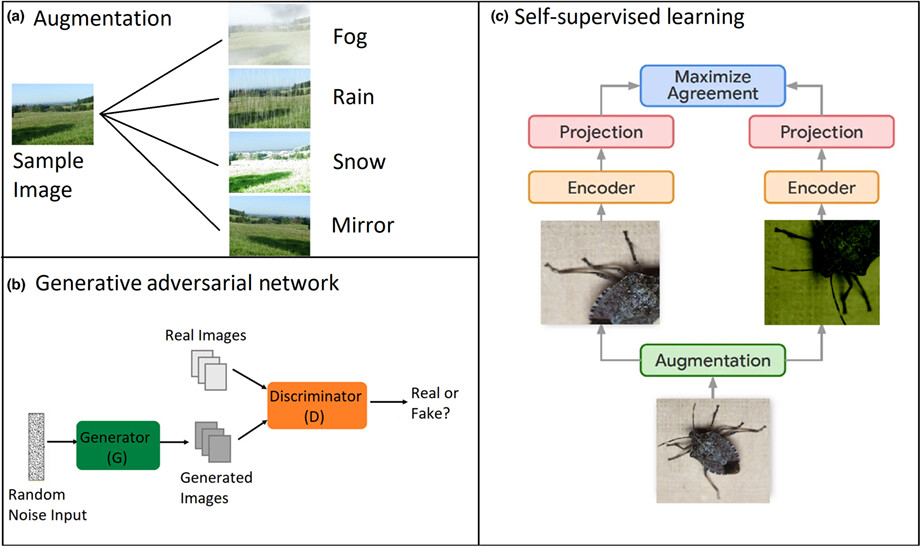
Deep learning for computer vision has shown promising results in the field of entomology, however, there still remains untapped potential. There are solutions using data augmentation, simulators, generative models, and self-supervised learning that supplement limited data labels. Here, we highlight the success of deep learning for computer vision within entomology, discuss data collection efforts, provide methodologies for optimizing learning from limited annotations, and conclude with practical guidelines for how to achieve a foundation model for entomology capable of accessible automated ecological monitoring on a global scale.




